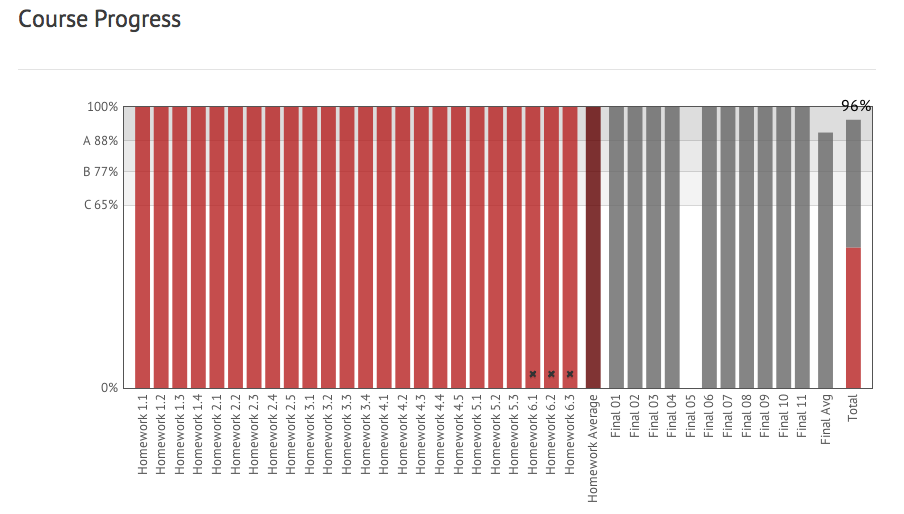Regression in pam_listfile module in RHEL5.9
Hot on the heels of the recent support ticket we opened with RedHat that has been finally resolved. For those who have RHN access below is the direct link: https://access.redhat.com/knowledge/solutions/328433
In a nutshell. After upgrading to RHEL 5.9 we lost the ability to ssh into any of our servers where pam_listfile was configured and the following error messages were registered in the logs instead:
Feb 27 13:51:41 host1 sshd[2649]: pam_listfile(sshd:account): Refused user abc for service sshd
Feb 27 13:51:41 host1 sshd[2649]: fatal: Access denied for user abc by PAM account configuration
pam_listfile configuration was configured as below:
account required pam_listfile.so onerr=fail item=group sense=allow file=/etc/security/groups.allow
Historically we had a duplicate local group in /etc/group with same id and name as ldap group and as we initially suspected that was the root cause:
In pam-0.99.6.2-6.el5_5.2, pam_listfile used the getgrent glibc function to fetch group information. This function call is non-selective, it fetches information about all groups from all NSS sources.
With the update to pam-0.99.6.2.12, pam_listfile uses the getgrnam_r glibc function call to fetch group information. This function call is selective, and it fetches information about only one group. Since it is a requirement that group names and group IDs should be unique across all identity sources, it stops once a single instance of the group name is found.
If you’re facing a similar behavior just double check for duplicate entries in the identity database.
M102 MongoDB for DBAs
The course is over and I did quite well:
Next class starts on the 29th of April so don’t miss it – education.10gen.com/courses
Personally, I’m going to try “M101P: MongoDB for Developers (Python)” which starts on the 1st of April.
OpenLDAP with TLS, ppolicy and master-master replication on RHEL6.3
This post has been dusting on a draft shelf for too long. No reason to keep it there any loger.
Below is the list of instructions which once followed would help anyone to end up with an OpenLDAP server on RHEL 6.1 (should work perfectly well with CentOS too). There is nothing special about it but if you’re looking for a tip on how to configure OpenLDAP, encrypt its database, setup PPolicy, use TLS and a two-way (master-master) replication then hope that you could take away something useful from this post.
That was an quick and short introduction.
The instructions listed below would assume that we have two LDAP servers:
LDAP1 – ldap1.example.com
LDAP2 – ldap2.example.com
And our test DN would be, what a surprise, dc=example,dc=com
Lets start from ldap1.example.com
- Install packages:
- Configure OpenLDAP:
- Global configuration Options
- Global Database Options
- Add your domain object (example.com in our case):
- Enable PPolicy
- Enable Audit overlay
- Add group and people OUs:
- Add ACLs, proxy LDAP account, SSSD and PAM configuration:
- At this point your first LDAP server should be configured. But you must repeat all of the above steps to setup the second LDAP and only after that proceed further.
- LDAP Replication
- Finally add actual data replication. This should be done on ldap1.example.com only since all the changes would be replicated to ldap2.example.com:
- Restart LDAP servers on both servers and check the logs to make sure that binding was successful and the replication has been established.
To be on the safe side, try to add a new DN in ou=people,dc=example,dc=com from ldap2.example.com, e.g. uid=testuser,ou=people,dc=example,dc=com, to make sure that this new record will be propagated to ldap1.example.com
yum -y install openldap-servers.x86_64 openldap-clients.x86_64
2.1 Specify olcRootDN and olcRootPW for olcDatabase: {0}config and olcDatabase: {2}bdb databases:
Use slappasswd to generate {SSHA} hashed passwords and add them into:
vi /etc/openldap/slapd.d/cn\=config/olcDatabase\=\{0\}config.ldif:
olcRootDN: cn=config
olcRootPW: ##HASHED_PASSWORD##
/etc/openldap/slapd.d/cn\=config/olcDatabase\=\{2\}bdb.ldif respectively:
olcSuffix: dc=example,dc=com
olcRootDN: cn=manager,dc=example,dc=com
olcRootPW: ##HASHED_PASSWORD##
vi /etc/openldap/slapd.d/cn\=config/olcDatabase\=\{1\}monitor.ldif
olcAccess: {0}to * by dn.base="gidNumber=0+uidNumber=0,cn=peercred,cn=externa
l,cn=auth" read by dn.base="cn=manager,dc=example,dc=com" read by * none
2.2 Specify Database configuration options and enable encryption:
cat bdb.ldif
dn: olcDatabase={2}bdb,cn=config
changetype: modify
replace: olcDbConfig
olcDbConfig: set_cachesize 0 268435456 1
olcDbConfig: set_lg_regionmax 262144
olcDbConfig: set_lg_bsize 2097152
olcDbConfig: set_flags DB_LOG_AUTOREMOVE
-
replace: olcDbCryptKey
olcDbCryptKey: ##YOU_CRYPT_KEY##
ldapmodify -h 127.0.0.1 -x -W -D “cn=config” -f ./bdb.ldif
Enter LDAP Password:
modifying entry "olcDatabase={2}bdb,cn=config"
After that stop LDAP server, remove DB files and start LDAP server again:
/etc/init.d/slapd stop rm -f /var/lib/ldap/* /etc/init.d/slapd start
One LDAP server is restarted DB files will be recreated and encrypted.
3.1 Generate CRS, signed it and copy to a directory of your choice. Please keep in mind that if you’re gong to configure a replication the paths and the names must be identical on both ldap nodes. Otherwise, when you bring a replication up it would overwrite your settings and TLS on one of the servers would be broken:
cat ./config.ldif dn: cn=config changetype: modify delete: olcTLSCACertificatePath - replace: olcTLSCACertificateFile olcTLSCACertificateFile: ##PATH_TO_CA_FILE## - replace: olcTLSCertificateFile olcTLSCertificateFile: ##PATH_TO_CERTIFICATE_FILE## - replace: olcTLSCertificateKeyFile olcTLSCertificateKeyFile: ##PATH_TO_KEY_FILE## - replace: olcTLSCipherSuite olcTLSCipherSuite: HIGH:MEDIUM:!ADH:-SSLv2:+SSLv3 - replace: olcSaslSecProps olcSaslSecProps: noanonymous,noplain,minssf=112 - replace: olcDisallows olcDisallows: bind_anon - replace: olcIdleTimeout olcIdleTimeout: 120 ldapmodify -h 127.0.0.1 -x -W -D “cn=config” -f ./config.ldif Enter LDAP Password: modifying entry "cn=config"
Disable all LDAP access schemas in /etc/sysconfig/ldap and leave only LDAPS enabled and set the following option:
SLAPD_OPTIONS="-g ldap"
Time to restart LDAP server to make sure everything is still fine:
/etc/init.d/slapd restart
cat ./frontend.ldif
dn: olcDatabase={-1}frontend,cn=config
changetype: modify
add: olcPasswordHash
olcPasswordHash: {SSHA}
-
add: olcRequires
olcRequires: LDAPv3 authc
ldapmodify -H ldaps://ldap1.example.com -x -W -D “cn=config” -f ./frontend.ldif
Enter LDAP Password:
modifying entry "olcDatabase={-1}frontend,cn=config"
cat ./example_com.ldif dn: dc=example,dc=com objectClass: dcObject objectClass: organization dc: example o: Example Com description: Example Com ldapadd -H ldaps://ldap1.example.com -x -W -D “cn=manager,dc=example,dc=com” -f ./example_com.ldif Enter LDAP Password: adding new entry "dc=example,dc=com"
6.1. Load policy module
cat ./module.ldif dn: cn=module,cn=config objectClass: olcModuleList cn: module olcModuleLoad: ppolicy.la olcModulePath: /usr/lib64/openldap ldapadd -H ldaps://ldap1.example.com -x -W -D “cn=config” -f ./module.ldif Enter LDAP Password: adding new entry "cn=module,cn=config"
Restart LDAP with /etc/init.d/slapd restart
6.2 Add PPolicy Overlay:
cat ./ppolicy-overlay.ldif
dn: olcOverlay=ppolicy,olcDatabase={2}bdb,cn=config
objectClass: olcPPolicyConfig
olcOverlay: ppolicy
olcPPolicyDefault: cn=ppolicy,ou=policies,dc=example,dc=com
olcPPolicyUseLockout: TRUE
olcPPolicyHashCleartext: TRUE
ldapadd -H ldaps://ldap1.example.com -x -W -D "cn=config" -f ./ppolicy-overlay.ldif
Enter LDAP Password:
adding new entry "olcOverlay=ppolicy,olcDatabase={2}bdb,cn=config"
6.3 Create default PPolicy and its rules:
cat ./default_ppolicy.ldif dn: ou=policies,dc=example,dc=com objectClass: top objectClass: organizationalUnit ou: policies dn: cn=ppolicy,ou=policies,dc=example,dc=com objectClass: top objectClass: device objectClass: pwdPolicyChecker objectClass: pwdPolicy cn: ppolicy pwdAttribute: userPassword pwdInHistory: 8 pwdMinLength: 8 pwdMaxFailure: 3 pwdFailureCountInterval: 1800 pwdCheckQuality: 0 pwdMustChange: TRUE pwdGraceAuthNLimit: 0 pwdMaxAge: 7776000 pwdExpireWarning: 1209600 pwdLockoutDuration: 900 pwdLockout: TRUE ldapadd -H ldaps://smsk01gw01 -x -W -D “cn=manager,dc=example,dc=com” -f ./default_ppolicy.ldif Enter LDAP Password: adding new entry "ou=policies,dc=example,dc=com" adding new entry "cn=ppolicy,ou=policies,dc=example,dc=com"
mkdir /var/log/slapd/ chown ldap:ldap /var/log/slapd/ echo “local4.* /var/log/slapd/slapd.log” >> /etc/rsyslog.conf && /etc/init.d/rsyslog restart
cat ./audit.ldif
dn: cn=module{0},cn=config
changetype: modify
add: olcModuleLoad
olcModuleLoad: {1}auditlog
dn: olcOverlay=auditlog,olcDatabase={2}bdb,cn=config
changetype: add
objectClass: olcOverlayConfig
objectClass: olcAuditLogConfig
olcOverlay: auditlog
olcAuditlogFile: /var/log/slapd/auditlog.log
ldapadd -H ldaps://ldap1.example.com -x -W -D “cn=config” -f ./ppolicy.ldif
cat ./groups.ldif dn: ou=group,dc=example,dc=com objectClass: top objectclass: organizationalunit ou: group dn: cn=users,ou=group,dc=example,dc=com cn: users objectClass: posixGroup gidNumber: 10000 dn: ou=people,dc=example,dc=com objectClass: top objectclass: organizationalunit ou: people ldapadd -H ldaps://ldap1.example.com -x -W -D “cn=manager,dc=example,dc=com” -f ./groups.ldif Enter LDAP Password: adding new entry "ou=group,dc=examlple,dc=com" adding new entry "cn=users,ou=group,dc=example,dc=com" adding new entry "ou=people,dc=example,dc=com"
9.1 Proxy LDAP account
cat ./svc_ldp_proxy.ldif dn: cn=svc_ldp_proxy,dc=example,dc=com objectClass: simpleSecurityObject objectClass: organizationalRole cn: svc_ldp_proxy userPassword: ldapadd -H ldaps://ldap1.example.com -x -W -D “cn=manager,dc=example,dc=com” -f ./svc_ldp_proxy.ldif
9.2 ACLs
If you’re not interested in configuring replicatoion you could skip replicator.ldif part otherwise you should create a separate DN that will be used to bind to a remote LDAP server and to replicate the data. Strictly speaking that’s not required but it’s a good idea to have a dedicated account just to run the replication part.
cat ./replicator.ldif dn: cn=replicator,dc=example,dc=com objectClass: simpleSecurityObject objectClass: organizationalRole cn: replicator userPassword: ##REPLICATOR_PASSWORD## ldapadd -H ldaps://ldap1.example.com -x -W -D "cn=manager,dc=example,dc=com" -f ./replicator.ldif Enter LDAP Password: adding new entry "cn=replicator,dc=example,dc=com"
cat ./acl.ldif
dn: olcDatabase={2}bdb,cn=config
changetype: modify
replace: olcAccess
olcAccess: to attrs=userPassword by self write by dn="cn=replicator,dc=example,dc=com" write by anonymous auth
olcAccess: to * by dn="cn=svc_ldp_proxy,dc=example,dc=com" read by dn="cn=replicator,dc=example,dc=com" write by self read by users read by anonymous auth by * none
ldapmodify -H ldaps://ldap1.example.com -x -W -D “cn=config” -f ./acl.ldif
Enter LDAP Password:
modifying entry "olcDatabase={2}bdb,cn=config"
9.3 SSSD
cat /etc/sssd/sssd.conf [sssd] config_file_version = 2 services = nss, pam domains = LDAP [nss] filter_groups = root filter_users = root [pam] pam_verbosity = 2 [domain/LDAP] access_provider = simple simple_allow_groups = users tls_reqcert = never id_provider = ldap auth_provider = ldap chpass_provider = ldap use_fully_qualified_names = false ldap_uri = ldaps://ldap1.example.com:636/,ldaps://ldap2.example.com:636/ ldap_search_base = dc=example,dc=com ldap_default_bind_dn = cn=svc_ldp_proxy,dc=example,dc=com ldap_default_authtok_type = password ldap_default_authtok = ##PASSWORD## ldap_tls_cacert = ##PATH_TO_CA_FILE## ldap_id_use_start_tls = true ldap_pwd_policy = none enumerate = false cache_credentials = false
It’s a good idea to configure ldap.conf as well:
cat /etc/openldap/ldap.conf URI ldaps://ldap1.example.com:636/ ldaps://ldap2.example.com:636/ BASE dc=example,dc=com TLS_CACERT ##PATH_TO_CA_FILE##
9.4 NSS and PAM (Only for RHEL6 or simialr distros). For RHEL5 the settings would be slightly different and I provided them in the very end.
To be able to authenticate to the system and change a password using passwd command /etc/nsswitch.conf and /etc/pam.d/system-auth files must be updated respectively:
Verify that /etc/pam.d/system-auth has the following line:
password sufficient pam_sss.so use_authtok
/etc/nsswitch.conf must have the following settings:
passwd: files sss
shadow: files sss
group: files sss
ldap1.example.com
cat ./repl-module.ldif dn: cn=module,cn=config objectClass: olcModuleList cn: module olcModulePath: /usr/lib64/openldap olcModuleLoad: syncprov.la
cat ./repl-config.ldif
dn: cn=config
changetype: modify
replace: olcServerID
olcServerID: 1 ldaps://ldap1.example.com
olcServerID: 2 ldaps://ldap2.example.com
dn: olcOverlay=syncprov,olcDatabase={0}config,cn=config
changetype: add
objectClass: olcOverlayConfig
objectClass: olcSyncProvConfig
olcOverlay: syncprov
dn: olcDatabase={0}config,cn=config
changetype: modify
add: olcSyncRepl
olcSyncRepl: rid=001 provider=ldaps://ldap1.example.com binddn="cn=config" bindmethod=simple credentials=##PASSWORD## searchbase="cn=config" type=refreshAndPersist retry="5 5 300 5" timeout=1
olcSyncRepl: rid=002 provider=ldaps://ldap2.example.com binddn="cn=config" bindmethod=simple credentials=##PASSWORD## searchbase="cn=config" type=refreshAndPersist retry="5 5 300 5" timeout=1
-
add: olcMirrorMode
olcMirrorMode: TRUE
ldapmodify -H ldaps://ldap1.example.com/ -x -W -D “cn=config” -f ./repl-config.ldif
Enter LDAP Password:
modifying entry "cn=config"
adding new entry "olcOverlay=syncprov,olcDatabase={0}config,cn=config"
modifying entry "olcDatabase={0}config,cn=config"
Add the above to ldap2.example.com too.
ldapmodify -H ldaps://ldap2.example.com/ -x -W -D “cn=config” -f ./repl-config.ldif
If everything has been done correctly the replication of config database should be up and running.
cat ./bdb-repl.ldif
dn: olcDatabase={2}bdb,cn=config
changetype: modify
replace: olcLimits
olcLimits: dn.exact="cn=manager,dc=example,dc=com" time.soft=unlimited time.hard=unlimited size.soft=unlimited size.hard=unlimited
-
add: olcSyncRepl
olcSyncRepl: rid=004 provider=ldaps://ldap1.example.com binddn="cn=replicator,dc=example,dc=com" bindmethod=simple credentials=##PASSWORD## searchbase="dc=example,dc=com" type=refreshAndPersist retry="5 5 5 +" timeout=3
olcSyncRepl: rid=005 provider=ldaps://ldap2.example.com binddn="cn=replicator,dc=example,dc=com" bindmethod=simple credentials=##PASSWORD## searchbase="dc=example,dc=com" type=refreshAndPersist retry="5 5 5 +" timeout=3
-
add: olcMirrorMode
olcMirrorMode: TRUE
dn: olcOverlay=syncprov,olcDatabase={2}bdb,cn=config
changetype: add
objectClass: olcOverlayConfig
objectClass: olcSyncProvConfig
olcOverlay: syncprov
ldapmodify -H ldaps://ldap1.example.com -x -W -D “cn=config” -f ./bdb-repl.ldif
Enter LDAP Password:
modifying entry "olcDatabase={2}bdb,cn=config"
adding new entry "olcOverlay=syncprov,olcDatabase={2}bdb,cn=config"
As the last step update /etc/sysconfig/ldap and set all schemas to “no” leaving only SLAPD_URLS to look like a below:
SLAPD_URLS=”ldaps://ldap1.example.com ldaps://ldap2.example.com”
RHEL5 client configuration section
- LDAP:
- PAM:
- NSS:
cat /etc/ldap.conf base dc=example,dc=com uri ldaps://ldap1.example.com:636/ ldaps://ldap2.example.com:636/ binddn cn=svc_ldp_proxy,dc=example,dc=com bindpw ##PASSWORD## scope sub timelimit 120 bind_timelimit 120 idle_timelimit 3600 ldap_version 3 nss_base_group dc=example,dc=com nss_base_netgroup dc=example,dc=com # Just assume that there are no supplemental groups for these named users nss_initgroups_ignoreusers root,ldap,named,avahi,haldaemon,dbus,radvd,tomcat,radiusd,news,mailman pam_password exop pam_lookup_policy yes tls_cacertfile ##PATH_TO_CA_FILE##
cat /etc/pam.d/system-auth-ac #%PAM-1.0 auth required pam_env.so auth sufficient pam_unix.so nullok try_first_pass auth sufficient pam_ldap.so use_first_pass auth requisite pam_succeed_if.so uid >= 500 quiet auth required pam_deny.so account required pam_unix.so account required pam_access.so account sufficient pam_succeed_if.so uid < 500 quiet account [default=bad success=ok user_unknown=ignore] pam_ldap.so account required pam_permit.so password required pam_passwdqc.so min=disabled,disabled,disabled,8,8 retry=3 enforce=everyone password sufficient pam_unix.so sha512 shadow nullok try_first_pass use_authtok password sufficient pam_ldap.so use_authtok password required pam_deny.so session optional pam_keyinit.so revoke session required pam_limits.so session [success=1 default=ignore] pam_succeed_if.so service in crond quiet use_uid session sufficient pam_ldap.so session required pam_unix.so session required pam_mkhomedir.so umask=0077
Do not forget to configure /etc/nsswitch.conf appropriately depending on whether you are going to use ldap or compat.
Please, don't hesitate to let me know if you notice and mistakes or unfortunate typos that have cropped up.
Just a little bit more and I’ll become a star ;-)
Just want to keep it somewhere and think this place wold be the best one.
I have one of the top 10% most viewed @LinkedIn profiles for 2012
OpenGrok, Ubuntu and Linux source tree
After all, thanks to our very long New Year holidays, I had a chance to install OpenGrok search and cross reference engine. The main reason is to have a tool to be able to efficiently browse Linux kernel source code. I use OpenGrok quite frequently, especially when there is a need to dive into Solaris/OpenSolaris internals. Frankly speaking, I haven’t seen anything else that comes close to it. And you know what? It’s a trivial game to install and run OpenGrok on your favorite Linux distro, BSD, Mac OS X or Solaris. But since I use Ubuntu as my cloud server all further details will be provided having it in mind. I will refer to the default installation since in 99.9% cases that would be the choice (I guess).
- First things first. Lets download OpenGrok and install additional packages if they’re missing.
- By default, OpenGrok would use /var/opengrok so I chose to clone Linux source tree into /var/opengrok/src/linux-stable/ but you’re absolutely free to pick what suffice you most:
- Now it’s time to untar the archive and deploy OpenGrok.
- Now you should have source.war copied to your webapps directory (in my case that was /var/lib/tomcat6/webapps/source.war).
- Start Tomcat if it’s not and run the indexer.
wget http://hub.opensolaris.org/bin/download/Project+opengrok/files/opengrok-0.11.1.tar.gz sudo apt-get install tomcat6 git exuberant-ctags
sudo mkdir -p /var/opengrok/bin sudo mkdir /var/opengrok/lib sudo mkdir /var/opengrok/src && cd /var/opengrok/src sudo git clone git://git.kernel.org/pub/scm/linux/kernel/git/stable/linux-stable.git linux-stable
tar -zxf ./opengrok-0.11.1.tar.gz sudo cp ./opengrok-0.11.1/lib/opengrok.jar /var/opengrok/lib/ sudo cp ./opengrok-0.11.1/bin/OpenGrok /var/opengrok/bin/ sudo /var/opengrok/bin/OpenGrok deploy
/etc/init.d/tomcat6 start sudo /var/opengrok/bin/OpenGrok index /opt/opengrok/src Loading the default instance configuration ... WARNING: OpenGrok generated data path /var/opengrok/data doesn't exist Attempting to create generated data directory ... WARNING: OpenGrok generated etc path /var/opengrok/etc doesn't exist Attempting to create generated etc directory ... Creating default /var/opengrok/logging.properties ...
There is however a small catch. The indexer is started with -Xmx option set to 2048m and this is done on purpose. Since I only had 512MB of RAM I tried to reduce Xmx down to 128, 256 and 512 megabytes but all the time I got “java.lang.OutOfMemoryError: Java heap space” error. So in the end I temporarily increased the sizing of my cloud server to 4GB and only after that the indexer had finished successfully.
I’m happy with the overall result because even with 512MB OpenGrok works blazingly fast – come in and check. I’ll do my best to update it whenever there is a new Linux release. Since OpenGrok supports incremental updates that shouldn’t be a problem:
cd /var/opengrok/src/linux-stable && git pull sudo /var/opengrok/bin/OpenGrok update
Happy New Year
It’s the right time to stop rushing ahead insanely, respire, have a seat and look back for a while. Hope you all had a fantastic year full of life-long memories and events and let the new 2013 be at least twice as good as 2012. Happy New Year to you and your families!
Marry Christmas
My hearty well-wishes to all who celebrates Christmas today. Wish all the best to all of you and your families.
P.S. as I live in an a orthodox country we celebrate it in January.
Spacewalk, osad and jabberd miscommunication
Spacewalk is really a handy tool if you want to keep your Linux infrastructure up to date. Especially if you run Redhat based ditro, since essentially it’s community supported version of Redhat’s product called Satellite.
But it has a nasty issue, at least in our case, when the clients stop responding to the commands from a server. There are two mechanisms to deliver an action from a server to a client: through rhnsd, which by defaults connects to a server every 4 hours and checks if there any action it should execute, or using jabber protocol. In the later case a client receives an action request, i.e. install the latest packages or execute a command, from a server almost instantaneously but as I mentioned before, this cool feature stops working for no obvious reason. Everything seems to be working just fine: jabberd and osa-dispatcher are up and running, all client connects to a server flawlessly but an action request never reaches the target just like it has never been sent or got lost in between. Anyway, it seems that the only way out from this annoying situation is the following:
/etc/init.d/jabberd stop
/etc/init.d/osa-dispatcher stop
rm -f /var/lib/jabberd/db/*
su - postgresq && psql
delete from rhnPushDispatcher;
delete from rhnpushclient;
This is how we have to fix it from time to time. And don’t forget to restart osad daemon on all of your clients to reinstantiate a connection to your spacewalk server. If you have more than 10 servers this part could be a huge PITA. Hope that 1.8 release lacks this problem.
One week in the USA or between San Francisco and LA.
It’s really unbelievable that sometimes even the wildest dreams come true and I had a chance to visit the USA and spent a whole week from the 10th till the 17th of November. After quite a long flight, roughly 13 hours, we landed in LA airport safe and sound, took a quick connection flight to San Francisco and around 8 p.m. arrived to the hotel – Radisson Fisherman’s Wharf.
Below is how I had seen LA for the first time in my life from the plane’s window during the descent:
Frankly speaking I heard about one-story America before but could hardly imagine how it looks in real life. Literally it goes to and beyond the horizon. It was quite a shock because where I live the absolute majority have to cram into multi-story (from 5 to 20 and higher) concrete buildings and only well off part of our society could effort to have a private house. Well, enough brooding and grumping. ;-)
Our plan was the following: to stay in SF for three days, then go off to Monterey for one night, then drive through 17-mile drive and leave to Sequoia national park, have a good night sleep there and finally off to LA. That was an amazing and indescribable trip and we had a chance to visit and see many places around SF and on our way to LA. Before visiting the USA I knew that it’s a beautiful country with stunning views and picturesque landscapes. But believe me, when I saw it with my own eyes and had a chance to taste its scent only then I had understood how little these words had in common with the reality. I won’t even try to express my fillings because I doubt that such words even exist and the only wish that I have now is that someday I could return back and show this radiant country to my kids. Below just a few pictures that I took using my modest camera so please be kind and don’t be too tough on me ;-)
DLM lock levels in OCFS2
Yesterday I had to get a bit deeper into OCFS2 details and come across this very helpful blog post about different DLM lock levels used in OCFS2. Gave me a chance to place all the ducks in a row.








































